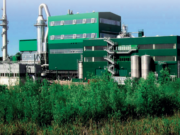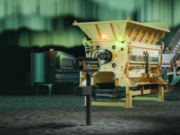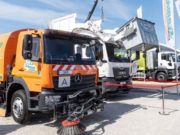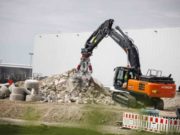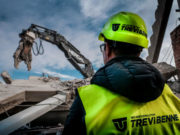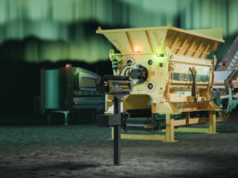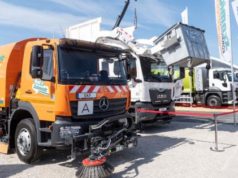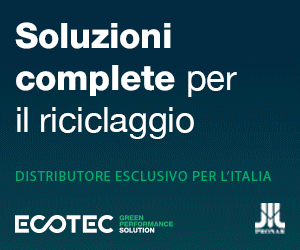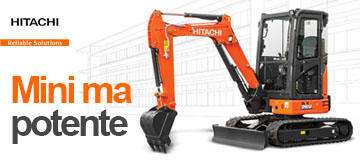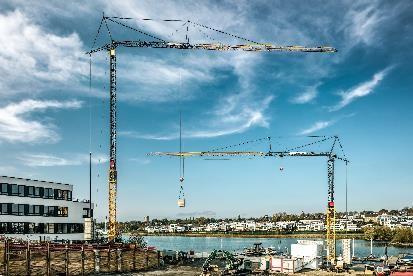
- Fast-erecting crane offers maximum lifting capacity with minimum space requirements
- Maximum hook height of 42 m or up to 66 m in 30° luffed jib position
- Delivered to site as a set-up ready unit and quickly assembled for efficient use
- Power supply with mobile battery-based energy storage possible
With a radius of 55 m and a hook height of up to approx. 66 m, the Liebherr 125 K is currently the largest fast-erecting crane on the market. Visitors at Intermat 2024 in Paris can now see the innovative K series concept for themselves. A well thought-out assembly system and low logistics costs make the Liebherr fast-erecting cranes particularly useful for shorter projects. The 125 K is, for example, ideal for work on construction projects such as multi-story residential buildings, bridges and industrial facilities. It can be operated with a mobile energy storage system if the on-site power supply is insufficient.
The 125 K offers an initial hook height of approx. 29.5 m as standard. Five tower sections can be inserted to reach a total hook height of approx. 42 m. This allows the crane to handle larger construction projects as well. If the hook height still isn’t sufficient, a 30° luffed jib position enables the crane to reach a hook height of 66 m.
The crane has a maximum load capacity of 8,000 kg and can lift up to 1,300 kg with the jib head at a radius of 55 m. Its exceptional flexibility is also demonstrated by its five radius options, ranging from 35 m to 55 m. The fast-erecting crane can be transported to site by trailer or semi-trailer with the appropriate axles. It travels as a complete unit so that it can be erected directly on site. No other tools are needed as assembly is achieved by means of low-maintenance rope kinematics.
Flexible deployment even in tight spaces
Construction site conditions are becoming increasingly tight and therefore require tower cranes to have compact dimensions to match. With its 3.2 m slewing radius, the Liebherr 125 K fast-erecting crane fits into very small spaces, something unique for a crane of this size. Due to its variable slewing radius, which can be extended to 4 m, the number of transportable ballasts can be reduced. This in turn reduces costs and allows the crane to be used in basements and similar spaces.
In addition to familiar features such as the Micromove fine positioning mode, Load-Plus (short-term load increase of 20 %) and Liebherr’s Speed2Lift pure two-line operation, further improvements have also been thought out in detail. This includes new lighting with LED floodlights to ensure even better illumination of job sites.
External cab for optimal view
The 125 K operates via Liebherr radio remote control. Two displays provide feedback on the current operating data. The remote control enables the crane operator to be close to the action and, at the same time, have everything important in view.
The 125 K has the option of being fitted with an external crane operator’s cab. The ergonomic cab offers optimal visibility of the loads to be moved, easy entry and exit and plenty of room for every operator. Similar to the crane’s unfolding, the assembly of the cab also works without any additional tools. The crane assembles the cab itself by moving it to a defined position on the tower, without any rotation.
Operation with mobile energy storage possible
At Intermat, visitors will be able to see the 125 K together with the Liduro Power Port (LPO) from Liebherr. The mobile battery-based energy storage system can take over the power supply if there is insufficient or no on-site power available. Hybrid or all-electric construction machines can be operated and charged locally with zero emissions.








